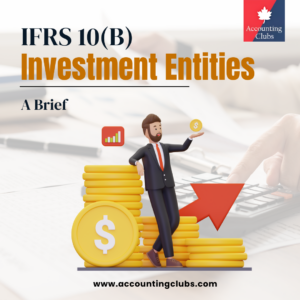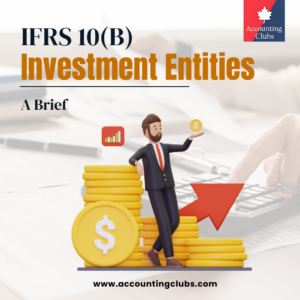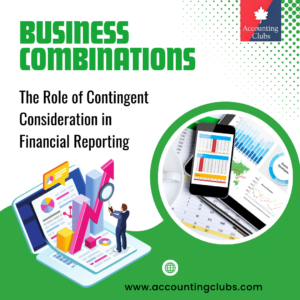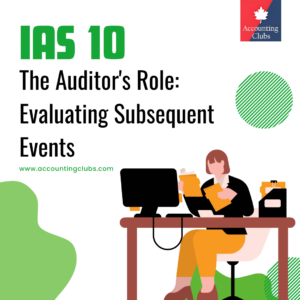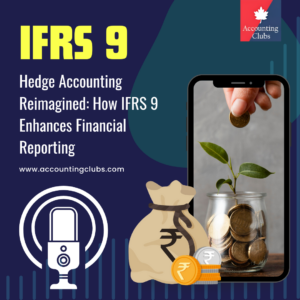Chapter 1: Introduction
Related party relationships and transactions between related parties are a normal feature of commerce and business. Many entities carry on their business activities through subsidiaries, joint ventures, and associates and there are inevitably transactions between these parties.
The investor, in these circumstances, has the ability to affect the financial and operating policies of the investee.
It is also common for entities under common control, which are not a group for financial reporting purposes, to transact with each other. The disclosures considered necessary in such circumstances are addressed by IAS 24 – Related Party Disclosures.
International Accounting Standard 24 Related Party Disclosures (IAS 24) requires a reporting entity to disclose:
- (a) transactions with its related parties; and
- (b) relationships between parents and subsidiaries irrespective of whether there have been transactions between those related parties.
International Accounting Standard 24 Related Party Disclosures
Objective
The objective of this Standard is to ensure that an entity’s financial statements contain the disclosures necessary to draw attention to the possibility that its financial position and profit or loss may have been affected by the existence of related parties and by transactions and outstanding balances, including commitments, with such parties.
Scope
This Standard shall be applied in:
(a) identifying related party relationships and transactions;
(b) identifying outstanding balances, including commitments, between an entity and its related parties;
(c) identifying the circumstances in which disclosure of the items in (a) and (b) is required; and
(d) determining the disclosures to be made about those items.
This Standard requires disclosure of related party relationships, transactions and outstanding balances, including commitments, in the consolidated and separate financial statements of a parent or investors with joint control of, or significant influence over, an investee presented in accordance with IFRS 10 Consolidated Financial Statements or IAS 27 Separate Financial Statements. This Standard also applies to individual financial statements.
Related party transactions and outstanding balances with other entities in a group are disclosed in an entity’s financial statements.
Intragroup related party transactions and outstanding balances are eliminated, except for those between an investment entity and its subsidiaries measured at fair value through profit or loss, in the preparation of consolidated financial statements of the group.
The related party issues
The problems posed by related party relationships and transactions are described in IAS 24 as follows: ‘A related party relationship could have an effect on the profit or loss and financial position of an entity. Related parties may enter into transactions that unrelated parties would not.
For example, an entity that sells goods to its parent at cost might not sell on those terms to another customer. In addition, transactions between related parties may not be made at the same amounts as between unrelated parties.
The profit or loss and financial position of an entity may be affected by a related party relationship even if related party transactions do not occur. The mere existence of the relationship may be sufficient to affect the transactions of the entity with other parties.
For example, a subsidiary may terminate relations with a trading partner on acquisition by the parent of a fellow subsidiary engaged in the same activity as the former trading partner.
Alternatively, one party may refrain from acting because of the significant influence of another – for example, a subsidiary may be instructed by its parent not to engage in research and development.’
Possible solutions
Re-measurement of related party transactions at fair values
One solution to the problems posed by related party relationships and transactions is to adjust the financial statements to value related party transactions as if they occurred with an independent third party and recognise any such transactions at an arm’s length price.
However, the consensus for over thirty years is that it is often impossible to establish what would have been the terms of any non-arm’s length transaction had it been negotiated on an arm’s length basis.
This is because no comparable transactions may have taken place and, in any event, the transaction might never have taken place at all if it had been negotiated using different values.
Disclosure of transactions
Because of this problem, accounting standards internationally require disclosure of related party transactions and relationships, rather than adjustment of the financial statements. This approach is adopted by the IASB in IAS 24 which is a disclosure standard.
IAS 24 does not establish any recognition or measurement requirements. Related party transactions are accounted for in accordance with the requirements of the IFRS applicable to the transaction. The disclosures required by IAS 24 are in addition to those required by other IFRSs.
For example, a loan to a related party will also be subject to the disclosure requirements of IFRS 7 – Financial Instruments: Disclosures. The purpose of disclosing information required by IAS 24 is to give users of the financial statements, information about transactions and whether they are at market terms, outstanding balances, including commitments, and relationships with related parties that may affect their assessment of an entity’s operations, including assessments of the risks and opportunities facing an entity.
Purpose of related party disclosures
Related party relationships are a normal feature of commerce and business. For example, entities frequently carry-on parts of their activities through subsidiaries, joint ventures, and associates. In those circumstances, the entity can affect the financial and operating policies of the investee through the presence of control, joint control, or significant influence.
A related party relationship could influence the profit or loss and financial position of an entity. Related parties may enter transactions that unrelated parties would not.
For example, an entity that sells goods to its parent at cost might not sell on those terms to another customer. Also, transactions between related parties may not be made at the same amounts as between unrelated parties.
The profit or loss and financial position of an entity may be affected by a related party relationship even if related party transactions do not occur. The mere existence of the relationship may be sufficient to affect the transactions of the entity with other parties.
For example, a subsidiary may terminate relations with a trading partner on acquisition by the parent of a fellow subsidiary engaged in the same activity as the former trading partner.
Alternatively, one party may refrain from acting because of the significant influence of another—for example, a subsidiary may be instructed by its parent not to engage in research and development.
For these reasons, knowledge of an entity’s transactions, outstanding balances, including commitments, and relationships with related parties may affect assessments of its operations by users of financial statements, including assessments of the risks and opportunities facing the entity.
The objective of IAS 24 is to ensure that financial statements contain the disclosures necessary to draw attention to the possibility that the reported financial position and results may have been affected by the existence of related parties and by transactions and outstanding balances with related parties. The Standard clarifies that ‘outstanding balances’ include commitments.
IAS 24 notes that related party relationships are a normal feature of business and commerce. It is common, for example, for entities to operate separate parts of their activities through subsidiaries, associates, or joint ventures.
Such relationships can influence the operating results and financial position of the reporting entity. They may lead to transactions being entered into between the related parties that would not be entered into between unrelated parties, or to transactions being affected at different amounts than would prevail between unrelated parties.
The Standard also considers the implications of the existence of related party relationships – even if there are no transactions between the parties concerned. It acknowledges that the mere existence of the relationship may be sufficient to affect the transactions of the reporting entity with other parties.
For example, a subsidiary might terminate relations with a trading partner following the acquisition by its parent of a fellow subsidiary engaged in the same trade as the former partner. Alternatively, one party might refrain from acting because of the significant influence of another – for example, a subsidiary might be instructed by its parent not to engage in research and development.
For these reasons, IAS 24 concludes that knowledge of an entity’s transactions, outstanding balances (including commitments), and relationships with related parties may affect assessments of its operations by users of financial statements, including assessments of the risks and opportunities facing the entity.
Definitions
The following terms are used in this Standard with the meanings specified:
A related party is a person or entity that is related to the entity that is preparing its financial statements (in this Standard referred to as the ‘reporting entity’).
(a) A person or a close member of that person’s family is related to a reporting entity if that person:
(i) has control or joint control of the reporting entity;
(ii) has significant influence over the reporting entity; or
(iii) is a member of the key management personnel of the reporting entity or of a parent of the reporting entity.
(b) An entity is related to a reporting entity if any of the following conditions applies:
(i) The entity and the reporting entity are members of the same group (which means that each parent, subsidiary, and fellow subsidiary is related to the others).
(ii) One entity is an associate or joint venture of the other entity (or an associate or joint venture of a member of a group of which the other entity is a member).
(iii) Both entities are joint ventures of the same third party.
(iv) One entity is a joint venture of a third entity and the other entity is an associate of the third entity.
(v) The entity is a post-employment benefit plan for the benefit of employees of either the reporting entity or an entity related to the reporting entity. If the reporting entity is itself such a plan, the sponsoring employers are also related to the reporting entity.
(vi) The entity is controlled or jointly controlled by a person identified in (a).
(vii) A person identified in (a)(i) has significant influence over the entity or is a member of the key management personnel of the entity (or of a parent of the entity).
(viii) The entity, or any member of a group of which it is a part, provides key management personnel services to the reporting entity or to the parent of the reporting entity.
A related party transaction is a transfer of resources, services or obligations between a reporting entity and a related party, regardless of whether a price is charged.
Close members of the family of a person are those family members who may be expected to influence, or be influenced by, that person in their dealings with the entity and include:
(a) that person’s children and spouse or domestic partner;
(b) children of that person’s spouse or domestic partner; and
(c) dependents of that person or that person’s spouse or domestic partner.
Compensation includes all employee benefits (as defined in IAS 19 Employee Benefits) including employee benefits to which IFRS 2 Share-based Payment applies.
Employee benefits are all forms of consideration paid, payable or provided by the entity, or on behalf of the entity, in exchange for services rendered to the entity. It also includes such consideration paid on behalf of a parent of the entity in respect of the entity.
Compensation includes:
(a) short-term employee benefits, such as wages, salaries and social security contributions, paid annual leave and paid sick leave, profit-sharing and bonuses (if payable within twelve months of the end of the period) and non-monetary benefits (such as medical care, housing, cars and free or subsidized goods or services) for current employees;
(b) post-employment benefits such as pensions, other retirement benefits, post-employment life insurance and post-employment medical care;
(c) other long-term employee benefits, including long-service leave or sabbatical leave, jubilee or other long-service benefits, long-term disability benefits and, if they are not payable wholly within twelve months after the end of the period, profit-sharing, bonuses and deferred compensation;
(d) termination benefits; and
(e) share-based payment.
The terms ‘control’ and ‘investment entity’, ‘joint control’, and ‘significant influence’ are defined in IFRS 10, IFRS 11 Joint Arrangements and IAS 28 Investments in Associates and Joint Ventures respectively and are used in this Standard with the meanings specified in those IFRSs.
Key management personnel are those persons having authority and responsibility for planning, directing, and controlling the activities of the entity, directly or indirectly, including any director (whether executive or otherwise) of that entity.
Government refers to government, government agencies and similar bodies whether local, national or international.
A government-related entity is an entity that is controlled, jointly controlled or significantly influenced by a government.
In considering each possible related party relationship, attention is directed to the substance of the relationship and not merely the legal form.
In the context of this Standard, the following are not related parties:
(a) two entities simply because they have a director or other member of key management personnel in common or because a member of key management personnel of one entity has significant influence over the other entity.
(b) two joint venturers simply because they share joint control of a joint venture.
(c) (i) providers of finance, (ii) trade unions, (iii) public utilities, and (iv) departments and agencies of a government that does not control, jointly control, or significantly influence the reporting entity, simply by virtue of their normal dealings with an entity (even though they may affect the freedom of action of an entity or participate in its decision-making process).
(d) a customer, supplier, franchisor, distributor, or general agent with whom an entity transacts a significant volume of business, simply by virtue of the resulting economic dependence.
In the definition of a related party, an associate includes subsidiaries of the associate and a joint venture includes subsidiaries of the joint venture. Therefore, for example, an associate’s subsidiary and the investor that has significant influence over the associate are related to each other.
Related party
Overall requirement to consider the substance of potential related party relationships
IAS 24 requires the substance of each potential related party relationship to be considered, and not merely the legal form.
List of related parties in IAS 24 is exhaustive
The list of related party relationships falling within the scope of IAS 24 as set out in IAS 24 is exhaustive. Types of relationships not contained within that list are outside the scope of the Standard.
However, the determination as to whether a relationship falls within one of the categories listed can involve considerable judgement, with focus on the substance of a relationship and not merely its legal form.
Related party – definition
IAS 24 provides the following definition of a related party. “A related party is a person or entity that is related to the entity that is preparing its financial statements (in IAS 24 referred to as the ‘reporting entity’).
A person or a close member of that person’s family is related to a reporting entity if that person:
(i) has control or joint control of the reporting entity;
(ii) has significant influence over the reporting entity; or
(iii) is a member of the key management personnel of the reporting entity or of a parent of the reporting entity.
(b) An entity is related to a reporting entity if any of the following conditions applies:
(i) The entity and the reporting entity are members of the same group (which means that each parent, subsidiary, and fellow subsidiary is related to the others).
(ii) One entity is an associate or joint venture of the other entity (or an associate or joint venture of a member of a group of which the other entity is a member).
(iii) Both entities are joint ventures of the same third party.
(iv) One entity is a joint venture of a third entity and the other entity is an associate of the third entity.
(v) The entity is a post-employment benefit plan for the benefit of employees of either the reporting entity or an entity related to the reporting entity. If the reporting entity is itself such a plan, the sponsoring employers are also related to the reporting entity.
(vi) The entity is controlled or jointly controlled by a person identified in (a).
(vii) A person identified in (a)(i) has significant influence over the entity or is a member of the key management personnel of the entity (or of a parent of the entity).
(viii) The entity, or any member of a group of which it is a part, provides key management personnel services to the reporting entity or to the parent of the reporting entity.”
IAS 24 clarifies that, for the purposes of the definition of a related party, an associate includes subsidiaries of the associate and a joint venture includes subsidiaries of the joint venture. This means that an associate’s subsidiary and the investor that has significant influence over the associate are related to each other in accordance with IAS 24.
Joint operations as defined in IFRS 11
The definition of a related party under IAS 24 encompasses ‘joint ventures’ but not ‘joint operations’. The term ‘joint venture’ is clearly defined in IFRS 11 and it does not include joint operations. As discussed, the list of related party relationships falling within the scope of the Standard as set out in IAS 24 is exhaustive and types of relationships not contained within that list are outside the scope of IAS 24.
It is not wholly clear whether this exclusion of joint operations from the scope of IAS 24 was intended by the Board. The exclusion is not specifically discussed in the Standard or in the Basis for Conclusions on IAS 24. However, it is consistent with the position taken by the Board on several related issues, i.e., that a joint operation is viewed as being part of the entity itself.
“Assets and liabilities arising from joint operations are an entity’s assets and liabilities and consequently are recognised in the entity’s financial statements. Those assets and liabilities would be accounted for in accordance with the requirements of applicable IFRSs and would be subject to the relevant disclosure requirements of those IFRSs. Therefore, the Board concluded that entities should not be required to provide summarised financial information separately for joint operations.”
Although the wording of IAS 24 means that entities are not required to provide related party disclosures in respect of transactions with joint operations, entities may wish to consider making disclosure on a voluntary basis if the information is material.
Examples illustrating the application of the definition of related party
The Standard includes several examples which illustrate the application of the definition of a related party to five scenarios. These examples are reproduced below.
Example: Associates and subsidiaries
Parent entity has a controlling interest in Subsidiaries A, B and C and has significant influence over Associates 1 and 2. Subsidiary C has significant influence over Associate 3.
For Parent’s separate financial statements, Subsidiaries A, B and C and Associates 1, 2 and 3 are related parties.
For Subsidiary A’s financial statements, Parent, Subsidiaries B and C and Associates 1, 2 and 3 are related parties. For Subsidiary B’s separate financial statements, Parent, Subsidiaries A and C and Associates 1, 2 and 3 are related parties. For Subsidiary C’s financial statements, Parent, Subsidiaries A and B and Associates 1, 2 and 3 are related parties.
For the financial statements of Associates 1, 2 and 3, Parent and Subsidiaries A, B and C are related parties. Associates 1, 2 and 3 are not related to each other.
For Parent’s consolidated financial statements, associates 1, 2 and 3 are related to the Group.
Example
Key management personnel
A person, X, has a 100 per cent investment in Entity A and is a member of the key management personnel of Entity C. Entity B has a 100 per cent investment in Entity C.
For Entity C’s financial statements, Entity A is related to Entity C because X controls Entity A and is a member of the key management personnel of Entity C.
For Entity C’s financial statements, Entity A is also related to Entity C if X is a member of the key management personnel of Entity B and not of Entity C.
Furthermore, the outcome described will be the same if X has joint control over Entity A. (If X had only significant influence over Entity A and not control or joint control, then Entities A and C would not be related to each other.)
For Entity A’s financial statements, Entity C is related to Entity A because X controls A and is a member of Entity C’s key management personnel.
Furthermore, the outcome described will be the same if X has joint control over Entity A. The outcome will also be the same if X is a member of key management personnel of Entity B and not of Entity C.
For Entity B’s consolidated financial statements, Entity A is a related party of the Group if X is a member of key management personnel of the Group.
Example
Person as investor
A person, X, has an investment in Entity A and Entity B.
For Entity A’s financial statements, if X controls or jointly controls Entity A, Entity B is related to Entity A when X has control, joint control, or significant influence over Entity B.
For Entity B’s financial statements, if X controls or jointly controls Entity A, Entity A is related to Entity B when X has control, joint control, or significant influence over Entity B.
If X has significant influence over both Entity A and Entity B, Entities A and B are not related to each other.
Example
Close members of the family holding investments
A person, X, is the domestic partner of Y. X has an investment in Entity A and Y has an investment in Entity B.
For Entity A’s financial statements, if X controls or jointly controls Entity A, Entity B is related to Entity A when Y has control, joint control, or significant influence over Entity B.
For Entity B’s financial statements, if X controls or jointly controls Entity A, Entity A is related to Entity B when Y has control, joint control, or significant influence over Entity B.
If X has significant influence over Entity A and Y has significant influence over Entity B, Entities A and B are not related to each other.
Example
Entity with joint control
Entity A has both (i) joint control over Entity B and (ii) joint control or significant influence over Entity C.
For Entity B’s financial statements, Entity C is related to Entity B.
Similarly, for Entity C’s financial statements, Entity B is related to Entity C.
Parties that are not related
The following are not related parties:
(a) two entities simply because they have a director or other member of key management personnel in common or because a member of key management personnel of one entity has significant influence over the other entity;
(b) two venturers simply because they share joint control of a joint venture;
(c) (i) providers of finance, (ii) trade unions, (iii) public utilities, and (iv) departments and agencies of a government that does not control, jointly control or significantly influence the reporting entity, simply by virtue of their normal dealings with an entity (even though they may affect the freedom of action of an entity or participate in its decision-making process); and
(d) a customer, supplier, franchisor, distributor or general agent with whom an entity transacts a significant volume of business, simply by virtue of the resulting economic dependence.
Parties specifically identified as ‘not related’
It is important to understand that IAS 24 does not provide a blanket exemption from the requirements of the Standard for the relationships listed. If the reporting entity has a related party relationship, as defined in IAS 24, with one of these entities, the general requirements apply.
Essentially, IAS 24 clarifies that disclosures are not required in respect of the relationships listed in the absence of a related party relationship for some other reason.
It may be the case, for example, that a supplier operates a system of inducements (e.g., loans or bank guarantees) in exchange for a customer’s agreement to source supplies solely from that supplier. This, of itself, will not normally create a related party relationship. However, it is necessary to consider whether the agreement allows the supplier to direct the relevant activities of the customer.
For example, provided that it is not economically prohibitive for the customer to terminate the relationship with the supplier if more favourable terms are available elsewhere, such an agreement does not create a related party relationship.
A bank may provide loan finance to an entity and charge it a fee for doing so. IAS 24 does not require disclosure of the relationship and transactions between the entity and its providers of finance simply as a result of those dealings; disclosure is not required unless the bank and the entity are otherwise related.
This may be contrasted with the situation in which a venture capitalist, with an equity stake giving it significant influence over an entity, procures external loan finance for that entity and charges a fee for doing so.
In the latter case, the investee and the venture capitalist are already related (because the venture capitalist has significant influence over the entity). Therefore, the exemption does not apply and all transactions (including the fees) should be disclosed.
Control
The definition of ‘control’ in IAS 24 is a cross-reference to the definition in IFRS 10. IFRS 10 states that ‘an investor controls an investee when the investor is exposed, or has rights, to variable returns from its involvement with the investee and has the ability to affect those returns through its power over the investee’.
Significant influence
The definition of ‘significant influence’ in IAS 24 is a cross-reference to the definition in IAS 28 – Investments in Associates and Joint Ventures. IAS 28 defines significant influence as ‘the power to participate in the financial and operating policy decisions of the investee but is not control or joint control of those policies.
In the definition of a related party, an associate includes subsidiaries of the associate. Therefore, for example, the subsidiary of an associate and the investor who has significant influence over the associate are related to each other. Mr X Mrs X Entity A Entity B
Arrangements involving more than two parties
Careful judgement should be exercised in determining whether contracts are in substance between related parties. In a series of transactions involving three or more parties in which two of the parties are related, it may be that in substance all the transactions should be seen as one overall arrangement between related parties.
For example, Mr X owns 100 per cent of Company A and Company B. Mr Y owns 100 per cent of Company C. Mr X and Mr Y have no family relationship; Mr X has no investment in or other involvement with Company C; Mr Y has no investment in or other involvement with Company A or Company B.
Company A owns a building, with a carrying amount of CU100 and a fair value of CU150. Company A sells the building to Company C for CU100, and Company C immediately sells it on to Company B for CU100.
On the basis of the information provided, and assuming no other relevant relationships, Company C is not a related party of Company A or Company B for the purposes of IAS 24.
However, careful judgement is required to determine whether the arrangement is in substance between related parties. In the circumstances described, it is likely that the transfers of the building from Company A to Company C, and from Company C to Company B will be considered as linked transactions, in which case the arrangement as a whole should be disclosed as a related party transaction because the substance of the arrangement would appear to be that of an overall agreement whereby Company A sells the building for CU100 (i.e., carrying amount) to its related party, Company B.
Post-employment benefit plans
IAS 24 states that a post-employment benefit plan for the benefit of the employees of the reporting entity (or of any entity that is a related party of the reporting entity) is a related party of the reporting entity.
If the reporting entity is itself such a post-employment plan, the sponsoring employers are also related to the reporting entity.
However, if an entity’s employees are members of an industry-wide pension scheme, which is open to all employees of entities that operate in that industry and participate in that industry-wide scheme, it is unlikely that the pension scheme is a related party of the entity.
This is because it is unlikely that any one entity controls, jointly controls or exercises significant influence over the industry-wide pension scheme. An industry-wide scheme is not “for the benefit of employees of either the reporting entity or an entity related to the reporting entity” – rather, it is for the benefit of all employees in that industry.
Definitions taken from other IFRS Standards
The terms ‘control’ and ‘investment entity’, ‘joint control’ and ‘significant influence’ are defined in IFRS 10, IFRS 11 and IAS 28, respectively, and are used in IAS 24 with the meanings specified in those Standards.
Does a bank have to disclose transactions with a related party customer where it has a duty of confidentiality?
Yes; there is no ‘confidentiality’ exemption, even where the entity has a duty of confidentiality imposed by law. Banks often have to keep details of their customers and their affairs confidential. There is no exemption from the related party disclosure requirements, even if a bank would breach its duty of confidentiality by making the disclosures.
A provider of finance is not a related party simply under its normal dealings with the customer. Normal banking transactions with the customer would not be disclosable if there is no other related party relationship between the bank and the customer.
A trust with a duty of confidentiality to its ultimate controlling party
Entity B is controlled by trust T. Mr. A has a direct interest in 100% of trust T and controls the trust. Trust T has signed an agreement with Mr A that prevents the trust from disclosing publicly the particulars of its controlling party, Mr. A.
Who should entity B disclose as its controlling party, given that trust T has signed an agreement prohibiting it from disclosing its relationship with Mr. A?
Entity B’s management should disclose Mr A as the controlling party of entity B, irrespective of whether there were transactions between them during the year. A legal agreement does not negate the requirement to disclose the controlling party. The disclosure is given whether the agreement is between trust T and Mr A or between trust T and entity B.
The financial statements should not be described as complying with IFRS, unless they comply with all of the requirements of IFRS. The same principle applies to disclosure of the ultimate parent entity. The name of the ultimate parent entity should also be disclosed, if it is not disclosed elsewhere in information published with the financial statements.
Significant Influence
Should holdings of bearer shares be considered in assessing whether the holder controls, jointly controls or has significant influence over the reporting entity?
Yes; in practice the directors know for whom they are working and to whom dividends are paid, even though the bearer shareholder is not registered by the entity.
Control, significant influence, or joint control from the same source
Entities A and B are related parties in each of the above scenarios. Entities A and C are related parties in each of the above scenarios. Entities B and C are related parties in each of the above scenarios.
Entity B should disclose details of any transactions with entity C that have been entered (together with any resulting balances). Entity C should include details of any transactions with entity B that have been entered (together with any resulting balances).
Disclosure of transactions between entities B and C will be required in entity A’s consolidated financial statements (even if the transactions were at arm’s length), because these are related party transactions between an associate (or joint venture) and the entity A group (of which the entity controlled by entity A is a member), and the transactions are not eliminated on consolidation.
Transactions between entity B and entity C are not disclosed in entity A’s separate financial statements. Entity A is the reporting entity in its separate financial statements. Transactions between entity B and entity C are not transactions with Entity A so they are not related party transactions.

